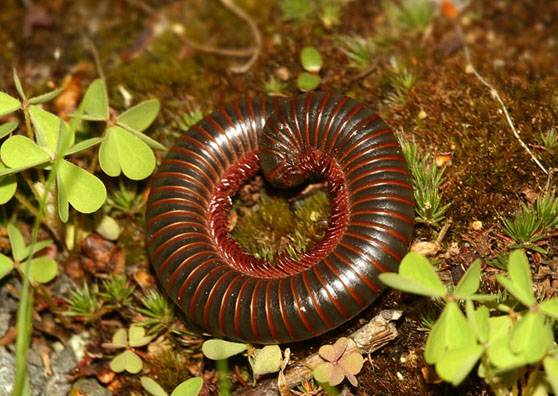Millipedes, often mistaken for their close relatives, the centipedes, are intriguing creatures that inhabit various ecosystems around the world. These multi-legged arthropods are not only diverse in appearance but also play important roles in their respective environments. Let's delve into five fascinating facts about millipedes.
1. Abundant Diversity: Millipedes belong to the class Diplopoda, and there are over 12,000 known species within this group. Despite their name, they don't actually have a thousand legs. The number of legs varies among species, but they typically have between 30 to 400 legs. Millipedes possess segmented bodies, and each segment has two pairs of legs. This diversity in leg count and body structure is a testament to their long evolutionary history and adaptation to various niches.
2. Defense Mechanisms: Millipedes are renowned for their unique defense mechanisms. When threatened, many species will coil up into a tight spiral, protecting their delicate undersides and exposing their hard exoskeletons. Some millipedes exude toxic chemicals as a deterrent, staining the skin of predators and causing irritation. These chemicals can be harmful to small animals and insects, but they generally pose little danger to humans. This chemical defense strategy has evolved as a survival mechanism, helping millipedes ward off potential threats.
3. Detritivores and Decomposers: Millipedes play a vital role in ecosystems as detritivores and decomposers. They primarily feed on decaying plant matter, contributing to the breakdown of organic material and nutrient cycling in the environment. By breaking down dead leaves and other plant debris, millipedes facilitate the recycling of nutrients, which benefits soil health and promotes the growth of new vegetation.
4. Ancient Origins: Millipedes have a rich evolutionary history that dates back hundreds of millions of years. Fossil evidence indicates that millipede-like creatures were present in terrestrial ecosystems as far back as the Silurian period, over 400 million years ago. These ancient arthropods provide valuable insights into the evolution of terrestrial life and the development of various ecological interactions over time.
5. Mating Behaviors: Millipedes exhibit a range of fascinating behaviors related to mating. In many species, courtship involves intricate dances and exchanges of chemical signals, which help individuals identify suitable partners. Some millipedes have evolved striking coloration or patterns that may serve as visual cues during courtship rituals. Once a mate is found, millipedes often engage in behaviors such as grooming and the exchange of sperm packets. Interestingly, in certain species, females may store sperm for extended periods before fertilizing their eggs.
In conclusion, millipedes are captivating creatures with a wealth of intriguing traits. Their diversity, defense mechanisms, ecological roles, ancient origins, and unique mating behaviors make them an essential part of the natural world. As we continue to explore and study these remarkable arthropods, we gain a deeper understanding of the intricate web of life that surrounds us.


